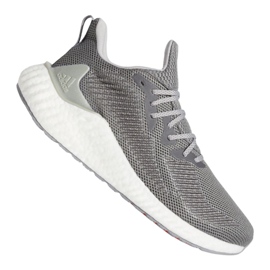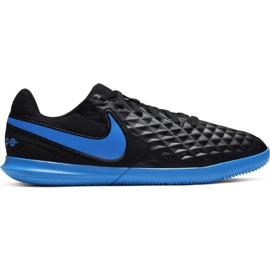Sports shoes - comfort, style and functionality every day and during training
History of sports shoes
Sports shoes, such as we know them today, have gone through an extremely long and fascinating path of development. Their history dates back to the nineteenth century, when the first footwear models were created for physical activity, mainly for running and practicing outdoor sports. Initially, sports shoes were simple in construction and made of natural materials, such as leather or canvas. With time, with the development of technology and increased interest in sport, these shoes began to evolve in terms of design and functionality. The sole was improved, which had an impact on adhesion and cushioning, and lace -up systems were refined, which improved foot stability during activity. In the 20th century, sports shoes gained immense popularity not only among athletes, but also as an element of everyday street fashion, becoming a symbol of style and comfort.
Types of sports shoes
Sports shoes come in many variants, adapted to various disciplines and the needs of users. The most popular types are running shoes, which, thanks to special cushioning and lightweight construction, minimize loads during training. Fitness and training shoes are characterized by a stable sole and good ventilation to provide support with various exercises. Basketball lovers choose shoes with a high profile that protect the cube during dynamic movements on the pitch. Football shoes are also available on the market, usually equipped with special traffic jams for adequate grip on the pitch. Sneakers casual footwear, although inspired by sports shoes, is dedicated mainly on a daily basis, combining comfort with a fashionable look. The choice of specific type depends primarily on the activity for which the shoes will be intended, as well as the individual preferences of the user.
Materials and technologies in sports shoes
Contemporary sports shoes are the result of advanced technologies and the use of modern materials that are aimed at increasing comfort, strength and efficiency during physical activity. Breathable mesh and elastic synthetic materials are often used for the production of uppers, which ensure ventilation and fit to the foot. The soles are made of light polyurethane, thermoplastic gum (TPR) or EVA foam, which guarantee cushioning and reduction of shocks. Many brands use innovative shock absorbing systems, such as airbags, gels or special density foams. Non -slip technology increases adhesion on various surfaces, which is crucial for safety during training. In addition, some models have reinforcements in strategic places, which affects the durability and protection of the foot against injuries. It is worth paying attention to technologies responsible for the stabilization of the heel and the flexibility of the soles that improve the biomechanics of movement.
How to choose sports shoes for your type of activity?
The choice of appropriate sports shoes should be primarily adapted to the type of physical activity. Running requires footwear with good cushioning and lightweight design that will protect your joints from overload. Stable shoes, providing support with dynamic movements and direction changes, will work better for training in the gym. If you play team sports, such as basketball or football, high cubes that protect and have adequate grip are important. When choosing, pay attention to the shape of your foot and how to set it - pronation, supination or neutral setting. It is also worth taking a test to change the size of the footwear so that it is not too tight or too loose, which can lead to abrasions or lack of stability. When choosing shoes, remember also about the surface on which you usually practice, because different models are optimized for the ground.
The importance of depreciation and support of foot in sports shoes
Depreciation in sports shoes is crucial for the comfort and protection of our joints and muscles during exercise. Good cushioning absorbs shocks arising when contacting the foot with the ground, reducing the risk of injury, such as knee pain or tendon overload. At the same time, foot support is an element that stabilizes the foot and helps maintain the correct posture during movement. Thanks to the appropriate construction of the upper and lacing, the unnecessary movement of the foot inside the shoe is reduced, which prevents abrasions and instability. Modern models are equipped with foot arc support systems and control over pronation that facilitate natural movement and protect against excessive load. It is worth choosing shoes that combine proper cushioning with appropriate support, adapted to individual needs and type of activity.
Sports shoes and a fashionable street style
Sports shoes have long ceased to be only an element of sports equipment - they have become an important part of street fashion and everyday wardrobe of many people. Designer sneakers, inspired by classic running or basketball shoes, often appear in collections of famous fashion brands, combining comfort with a unique style. Trends in street fashion promote mixing sports footwear with elegant or casual wardrobe elements, which gives the effect of a modern and practical look. Colorful, bold patterns and limited editions of sports shoes are particularly popular among young people and influencers, who often emphasize their personality by choosing a unique footwear. Everyday sports shoes are not only convenience, but also a manifestation of lifestyle - active, modern and dynamic.
How to care for sports shoes so that they serve as long as possible?
Proper care of sports shoes allows you to significantly extend their service life and keep them in good condition, both visually and functionally. After each training, it is worth cleaning the shoes of dirt, especially from mud and sand, using a soft brush and lukewarm water. It is recommended to avoid strong detergents that can violate the structure of synthetic materials or mesh. Drying should take place at room temperature, away from heat sources, which can deform shoes or damage gluing. Regular cleaning of the inner insert and disinfection help maintain freshness and prevent the development of bacteria. Storing shoes in a dry and airy place is another step in taking care of sports footwear. As you wear out, it is worth replacing the inserts with new ones, and in the case of damage to think about professional repair or replacement of shoes. Thanks to these treatments, the shoes will be comfortable and safe for a long time.
Women's sports shoes - trends and functionality
Women's sports shoes are a combination of aesthetics, comfort and solutions adapted to female anatomy. In recent years, manufacturers are increasingly designing models for women's needs, offering footwear with a properly profiled structure, narrowed heel and lightweight construction. In women's fashion, sports shoes are distinguished by a wealth of colors, designs and details that allow women to express their individual style also during training. In turn, practical aspects, such as good depreciation, breathability and support of the instep, provide convenience during intensive activity. Women's models are available both in versions intended for specific sports, as well as as lifestyle footwear, which fits perfectly into the urban stylization. It is worth paying attention to the choice of shoes adapted to your needs so that they combine fashionable design with functionality.
Men's sports shoes - durability and convenience
Men's sports shoes often focus on solidity and durable materials that will meet various training challenges and daily activities. The design of such shoes takes into account the greater body weight and greater loads, which is why men's models often stand out with reinforced soles and additional heel support. Functionality is combined here with design - currently classic, subdued colors and bold, conspicuous models are available. Footwear dedicated to a specific sports, such as running, football or strength training, has the appropriate features in terms of depreciation and stability. Men often choose sports shoes also because of their versatility and comfort of wearing every day. The practical nature of such shoes makes them an integral part of the wardrobe of many men.
Sports shoes and foot health - what to look for?
The health of the feet when playing sports is extremely important, and properly selected sports shoes can largely prevent this. Attention should be paid to several key aspects - above all the right size and shape of the footwear, which should not compress or cause foot shifts. It is worth checking if the shoes have adequate cushioning that protects the joints and muscles from overload. It is also good to choose models with good ventilation, which prevents excessive sweating and development of bacteria. Users with specific needs, such as flatfoot or pronation, should look for shoes with additional orthopedic inserts or special supports that correct the foot position. Regular change of shoes after a period of intensive use is also of great importance for foot health - used footwear loses its depreciation and stabilizing properties, which can lead to injury and discomfort.
































